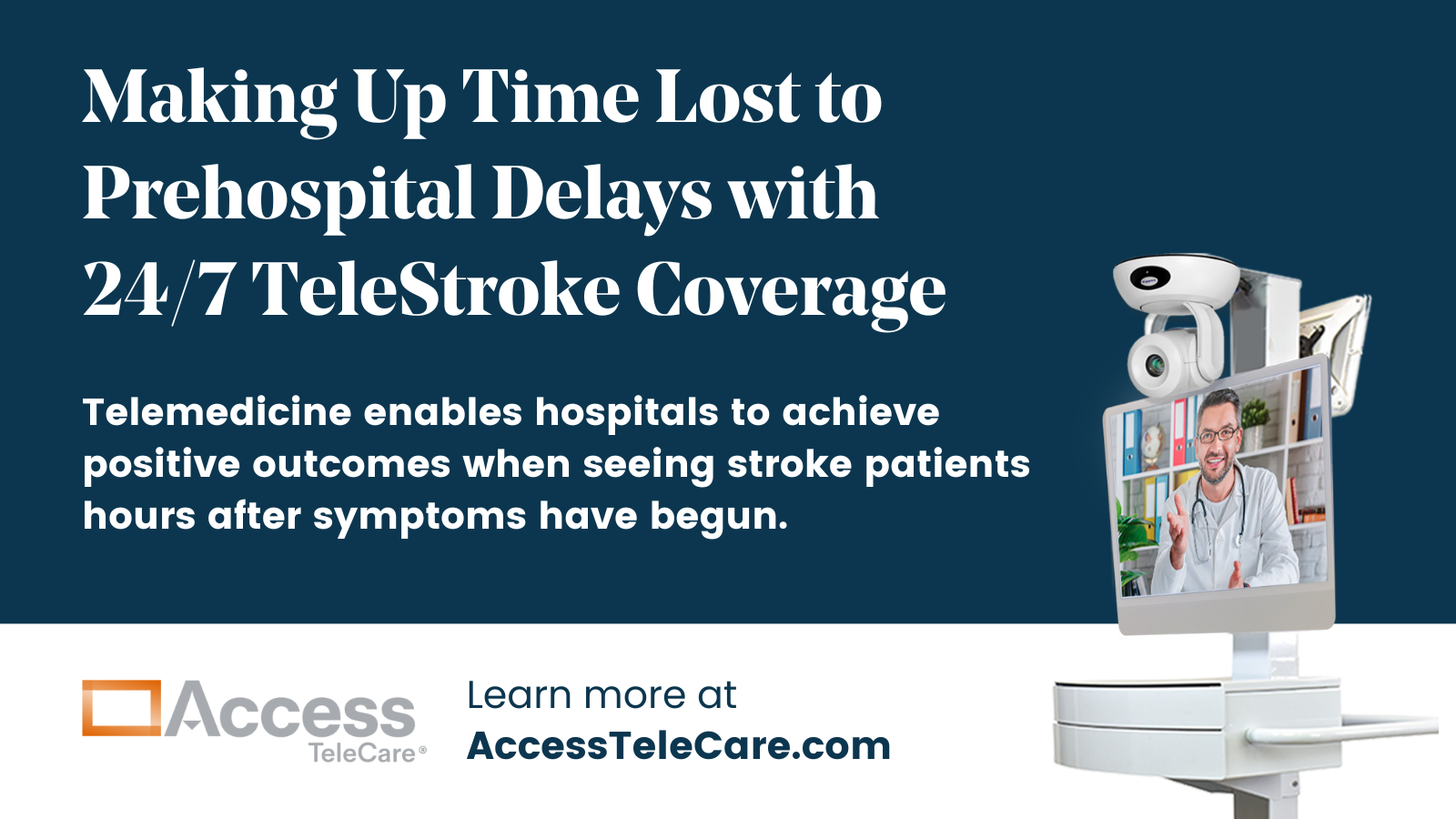By Eric Anderson, MD
This June, the Journal of Neurology published a paper surveying the neurological complications from COVID-19. Whereas past coronaviruses are known predominantly as respiratory infections, COVID-19 could lead to stroke, Guillain-Barré Syndrome, and encephalitis, the paper noted, while smaller studies showed cases reporting epilepsy, and acute myelitis in addition to neuropsychiatric presentations.
“It is becoming apparent that neurological complications of COVID-19 are relatively common, with a suggestion that they are seen more frequently with increasing disease severity,” the authors concluded.
And yet, hospitals in the U.S. have actually been seeing a decrease in volumes when it comes to incidents of stroke. A retrospective analysis of Intermountain Medical Center, to take just one example, published in September, showed a 43 percent decrease in stroke presentations when compared to the past three years. Two hospitals in Los Angeles reported a decrease of 50 percent in stroke alert activations during April, May, and June compared to the same period in 2019.
By this summer, it was clear what was going on: patients were afraid to get seen, and twenty five years of public education about the need for speedy care in case of possible stroke were being drowned out amid a global pandemic. And yet, COVID-19 should have the attention of neuroHospitalists—and their remote equivalent, teleNeuroHospitalists—everywhere.
Clearly we’ve come a long way from “Time is Brain.”
How we got here
I’ve written previously about how telestroke has paved the way for a broader conception of teleNeurology, and about how the COVID-19 crisis has dramatically accelerated that trend. Twenty-two years after the FDA approved tPA for ischemic stroke, Congress finally passed the FAST Act, mandating that Medicare reimburse for stroke care.
Now, we are in a holding pattern, unclear whether the floodgates have opened for a new normal of reimbursement for all of teleNeurology, or whether the lobbying and legislative battles over expanding access to teleNeurology will continue.
What is clear, however, is that an expanded role for teleNeurology has emerged as a focal point: the teleNeuroHospitalist.
The expansion into teleNeuroHospitalist care
The first teleNeurology programs mainly supported hospital emergency departments with emergency stroke care. But that scope has increased, and it has done so organically.
As rural hospitals expanded their telestroke programs, they began to be able to make decisions about future treatment, whether that was keeping and admitting stroke patients or transferring them. Patients who did not receive tPA in many cases still had to be admitted and cared for within the hospital.
It made sense then to go back to the teleNeurologist who had consulted in the ED as a resource for ongoing inpatient care. Internists began to make use of teleNeurology programs like ours for more than just emergencies. Additionally, hospitals where there were only one or two neuroHospitalists on staff began to rely on teleNeurology to plug gaps in overnight or on-call coverage, mainly to avoid burnout, or reliance on locums tenens physicians.
These two developments converged: thus was born our teleNeuroHospitalist program.
teleNeuroHospitalist: a new role
The role of teleNeuroHospitalist is relatively new—and growing.
The first time I recall the term teleNeuroHospitalist being used was in a 2012 paper titled Future NeuroHospitalists: Teleneurohospitalist. The authors noted the extensive research literature on the benefits of telestroke care. “Telestroke remains one of the best studied and validated models for telemedicine,” they wrote.
At the same time, there was clearly room for teleNeuroHospitalists to support patient care in other areas, including encephalopathy, seizure disorders, headache disorders, spinal cord injury, epilepsy, and critical care, the authors wrote.
The Mayo Clinic has provided teleNeuroHospitalist care to partner hospitals in Arizona since at least 2011. Among other benefits, their program allowed rural hospitals to treat athletes with possible concussions on site, rather than transfer them to hospitals which were more than three hours away. More recently, OSF HealthCare began a pilot teleNeuroHospitalist program in January 2019, with four teleNeuroHospitalists seeing patients at at least three sites. That program allowed a rural hospital in Illinois to retain 60-70 percent of its neurology patients, whereas previously nearly all of them had been transferred to other sites, according to a Pantagraph article about the program.
Here at SOC, our teleNeuroHospitalist program continues to expand. Demand for teleNeurology is expanding, but so is the specific need to do everything that a neuroHospitalist would do: see patients on the floor in a routine manner, and take care of the entire range of neurologic disorders.
Meanwhile, COVID-19 is only increasing the volume of inpatients suffering from neurological conditions. In the short-term, stroke alerts may be down. But our long-term future is one in which teleNeuroHospitalists are an increasingly crucial resource for U.S. hospitals.
****
Eric Anderson, MD, PhD is a teleNeurologist with Access TeleCare, and serves as Chair of Neurology, leading SOC’s Neurology Council. Dr. Anderson received his M.D. and Ph.D. degrees from the University of Nebraska Medical Center before completing his residency in Neurology at Emory University, where he was chief resident in 2013. Remaining at the University, he then completed his fellowship in Clinical Neurophysiology with a focus in epilepsy in 2014. Dr. Anderson is board-certified with the American Board of Psychiatry and Neurology and speaks nationally on the topics of telemedicine and mobile health.







